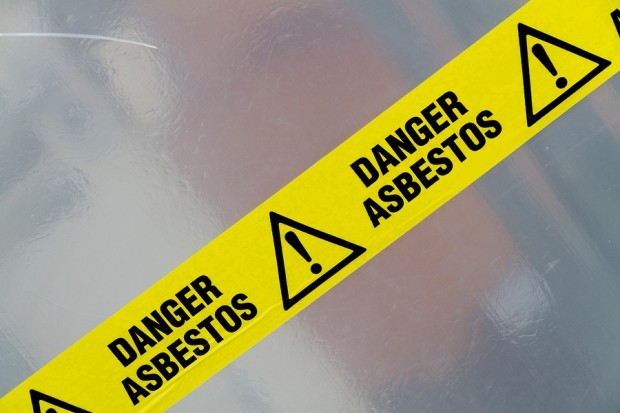A Connecticut appeals court has revived a wrongful death claim that tests a narrow exception to the state law that makes workers compensation the exclusive remedy for most workplace deaths and injuries.
Harold Dusto’s estate blames his death on mesothelioma caused by decades of exposure to asbestos working for product manufacturer Rogers Corp. at its facility in Manchester from 1970 until 2002.
Dusto accuses the employer of knowing about but not informing Dusto or other employees of the risks of asbestos; downplaying the number of employee asbestos-related claims; violating federal Occupational Safety and Health Administration (OSHA) standards; ignoring the results of asbestos-level tests and employee health screenings; and other conduct that created a dangerous workplace.
Rogers Corp. has argued that it is entitled to summary judgment as a matter of law because the claims against it are precluded by the exclusivity provision of the state’s workers compensation act.
Connecticut courts have recognized a narrow exception to workers compensation as an exclusive remedy where the employee can prove that the employer intentionally created a dangerous condition that made the employee’s injuries “substantially certain” to occur.
In its 2018 opinion in Lucenti v. Laviero, the Connecticut Supreme Court adopted four factors that should be considered in determining whether a plaintiff has satisfied the substantial certainty test: (1) prior similar accidents related to the conduct at issue that have resulted in employee injury, death, or a near-miss; (2) deliberate deceit on the part of the employer with respect to the existence of the dangerous condition; (3) intentional and persistent violations of safety regulations over a lengthy period of time; and (4) affirmative disabling of safety devices.
A trial court granted Rogers Corp. summary judgment after it concluded that the Dusto estate had failed to demonstrate a genuine issue of material fact to satisfy the “substantial certainty” test and defeat the exclusivity provision.
The trial court applied the Lucenti factors to the evidence. It found that there were only nine known asbestos-related workers compensation claims in the Manchester facility and thus a fact finder could not reasonably determine that Rogers Corp. had knowledge of similar accidents during the 1970s and early 1980s. Regarding deliberate deceit, the trial court noted that although Rogers Corp. may not have been entirely forthcoming, there is evidence that it began to implement safety measures in the 1970s. Regarding safety violations, it found one OSHA violation in 1975. The final factor, affirmative disabling of safety devices, the court found did not apply to the case.
Accordingly, the trial court concluded that Dusto had failed to raise a genuine issue of material fact regarding the substantial certainty exception to workers compensation exclusivity and Rogers Corp. was entitled to judgment as a matter of law. Dusto appealed.
A state appeals panel has now reversed that summary judgment ruling. The appeals court concluded that Dusto had demonstrated the existence of a genuine issue of material fact as to whether Rogers Corp. subjectively believed that its conduct was substantially certain to result in injury to its employees. As such, the case should go to a jury, the appeals court said, overruling the lower court.
The appeals court found that the trial court’s conclusions that there were “some” instances in which the asbestos levels were above OSHA limits, that Rogers Corp. “may have downplayed” the significance of potential health consequences of asbestos, and that Rogers Corp. “may not have completely complied” with federal safety standards do not reflect an examination of the evidence in the light most favorable to the plaintiff, as required for summary judgment.
The appeals court said the plaintiff satisfied the Lucenti factors. It noted that the evidence showed that Rogers was aware of the risks associated with asbestos exposure before Dusto joined Rogers Corp.; approximately 10 Rogers employees had filed asbestos-related claims by the early 1980s, and several had developed respiratory issues; Rogers Corp. failed to comply with OSHA standards regarding asbestos exposure levels into the late 1980s; Rogers Corp. did not inform its employees of the risks of exposure to high levels of asbestos, or that those levels were frequently revealed by testing at Rogers Corp. facilities; Rogers Corp. misled the union and its customers as to its compliance with OSHA standards; Rogers Corp. violated several federal safety regulations pertaining to working with asbestos, perhaps most notably, its failure to implement a respiratory program and provide its employees with proper respiratory protection.
“While all of this was happening at Rogers’ own facilities, it was admonishing others in the industry that, if they were not able to comply with OSHA’s requirements, they should not engage in the handling or production of asbestos related materials due to the risks that asbestos exposure posed to their employees,” the appeals court further noted.
The appeals court said it recognized that a fact finder could review the evidence and come to the same conclusions as the trial court did, but those conclusions are not so clear that Rogers Corp. was entitled to judgment as a matter of law. The appeals court found there is evidence for reasonable inferences to the contrary.
“Choosing which of these competing inferences to draw is the province of the jury,” the court concluded.





















 Insurance Costs, Climate Concerns Factor Heavily in U.S. Home Buying Decisions
Insurance Costs, Climate Concerns Factor Heavily in U.S. Home Buying Decisions  New York Regulates Consumer Litigation Financing
New York Regulates Consumer Litigation Financing  Underwriter, Actuary Fears of AI Drop; Work Needed on Collaboration
Underwriter, Actuary Fears of AI Drop; Work Needed on Collaboration  How Insurers Can Avoid Post-Merger Technology Failure
How Insurers Can Avoid Post-Merger Technology Failure 